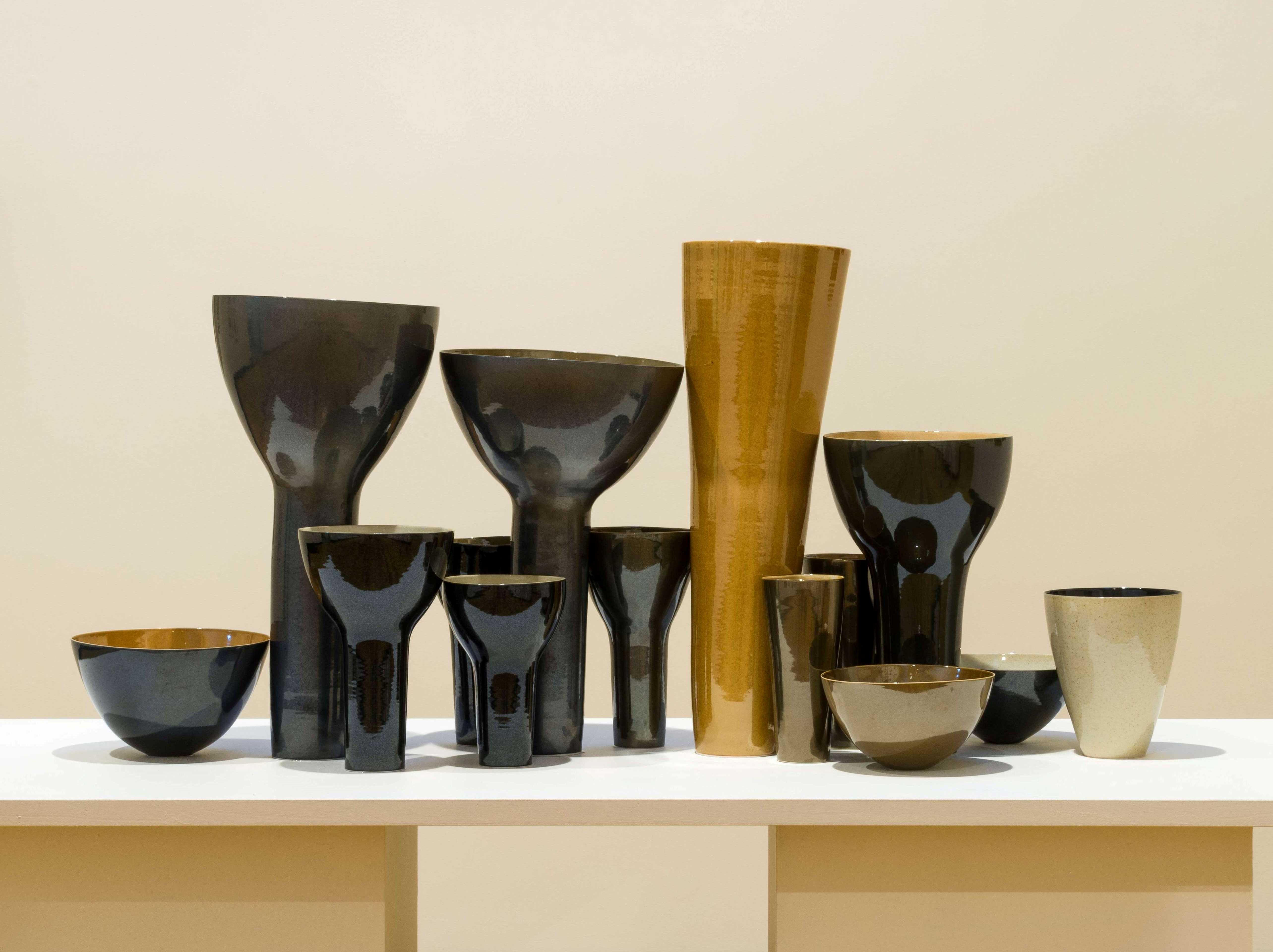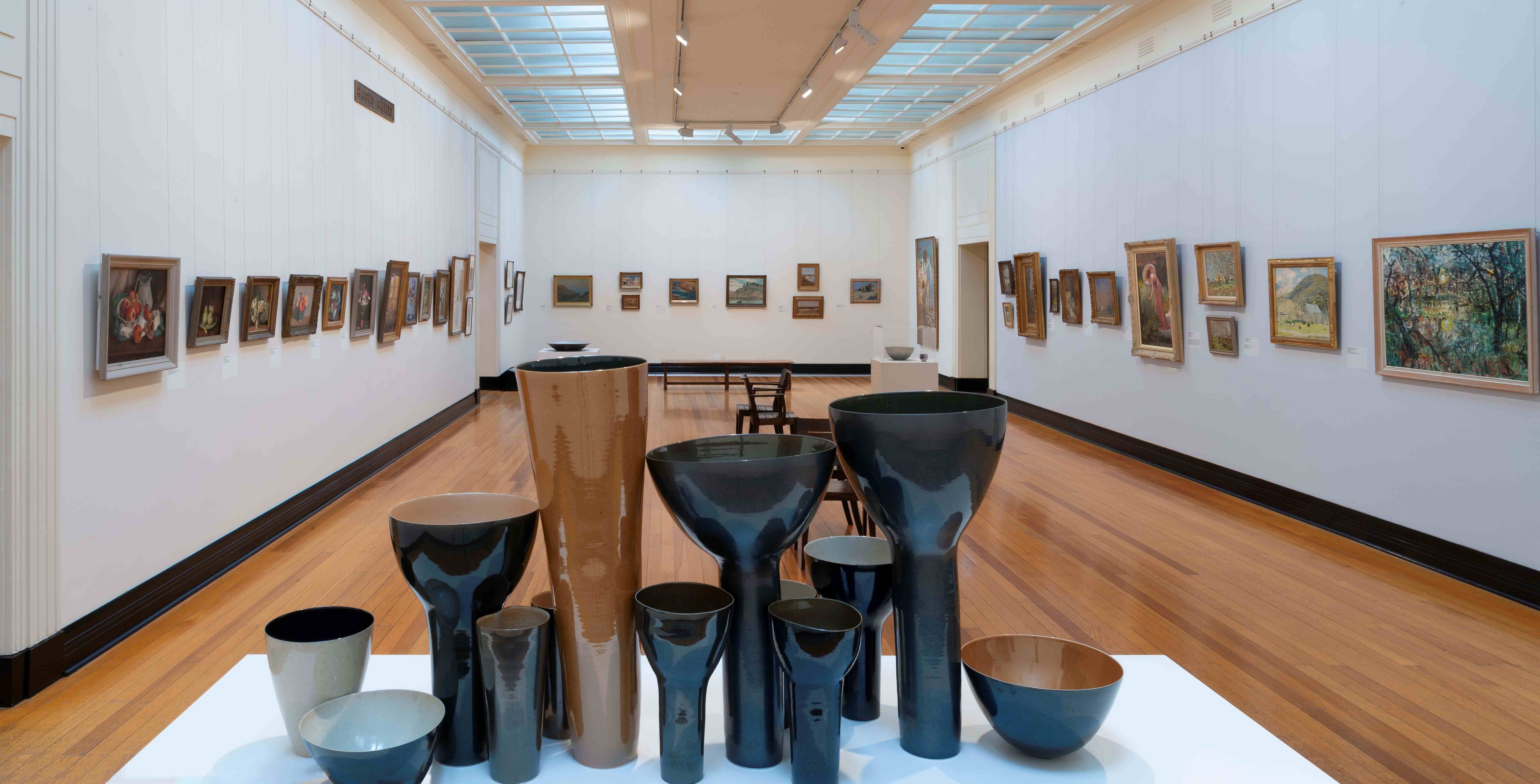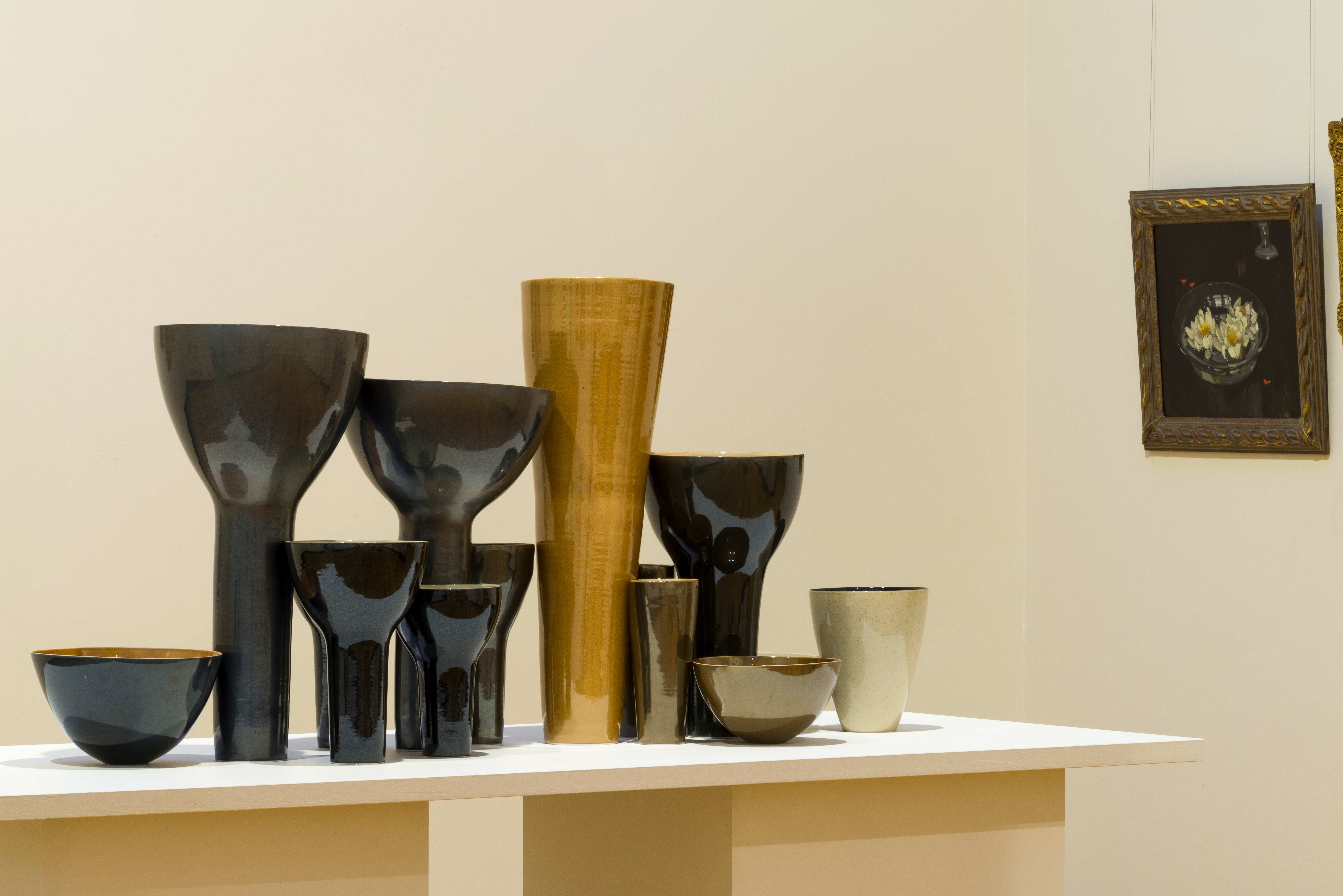Corben on Elson
In this insightful Reflection by local scientist Louise Corben, we gain a greater appreciation of Phil Elson's ensemble of porcelain vessels. Currently on view in the Higgins Gallery at CAM, visitors are equally delighted to see this work whether on their first viewing, or whether they are familiar with this treasure from the Collection.
Understanding the significance of Elson's title reminds us how important Artist-in-Residence programs are for artists in developing and expanding their practice.

Louise Corben on Phil Elson
In 2008, whilst a recipient of the Australian Council Studio Residency in Barcelona, Castlemaine potter, Phil Elson discovered an extraordinary sculpture by French artist, Bernar Venet (1941-). Arc 44.5° is a minimalist work featuring a 14-metre-high steel arc, located in the somewhat unassuming Placeta del Comerç.
Elson was struck by the utter simplicity of the bow-like structure and returned many times to study the beautiful line of the simple arc epitomized in this work. Homage to the singularity of the elemental arc was the genesis of Elson's work that would emerge two years later, Remembering Venet at 44.5 degrees, housed in the collection at Castlemaine Art Museum and the highlight of the current exhibition For everything there is season.

Remembering Venet at 44.5 degrees comprises 14 high-fired translucent porcelain pieces finished in a stunning shino style glaze. As with Venet’s Arc 44.5°, the simplicity of the arc guides the observer through a visual feast of line and moving beyond Venet, colour. The pieces, ranging in height from approximately 30cm to 60cm, are placed with seemingly mathematical precision and order.
The preponderance of pieces deliberately echo the arc, almost like grasses blowing in a gentle wind; while the remaining stand unbending in a silent salute to stillness. Most of the pieces are finished in an electrifying black shino style glaze, juxtaposed with the golden hue of the single, signature tallest piece. The choice of internal glazes for each piece draws the eye from the rim of each vessel to the base and back. From afar the effect of the installation is mesmerizing. Closer inspection reveals the mastery Elson commands of material, form, placement and glaze.
Elson has a long career in creating beautiful porcelain pieces, particularly bowls. His mentors include Victor Greenaway and Richard Brooks and, in addition to the 2008 Australia Council Studio Residency, he had been recipient of a previous Australia Council Crafts Board Grant in 1983 and an invited contributor to numerous exhibitions in addition to participating in solo exhibitions. Elson’s work reflects the sentiments of the English potter Richard Batterham (1936-2021), “The main work is not to make the pots, but to allow them to come, to allow them to grow, allow them to be alive… like the light" (1981) [1].

In Remembering Venet at 44.5 degrees Elson exemplifies the synergic capacity of the simple arc to unify the work in its entirety, while facilitating the emergence of the individual pieces. Indeed, he reflects that if one contemplates the two-dimensional representation of a bowl, one could draw a line between the rim and base of the bowl. This line encompasses and represents the space of the bowl. This line, in essence the arc, is the embodiment of the bowl. Elson has used this principle to create the reciprocal and symbiotic movement between the 14 pieces in his installation. The larger pieces lean into the signature (golden) piece seeming to embrace and accommodate their companion components in effortless grace, again reminding us of the binding nature of the arc and allowing the pots to come into their own being. The restraint of the smaller, static adjacent pots provides the antithesis to the arc yet conversely reinforcing the undulation of the larger pots.
Venet has moved on from the simple arc to explore concepts of disorder, entropy, transition, gravity and uncertainty. In contrast, Elson’s work continues to remind us about the importance of simplicity and harmony. This is the central premise of his work and is emblematic of the need to lean into each other, accommodate each other, and to strive for cohesion in every aspect of our lives.
Notes
1 https://www.theguardian.com/artanddesign/2021/sep/19/richard-batterham-obituary